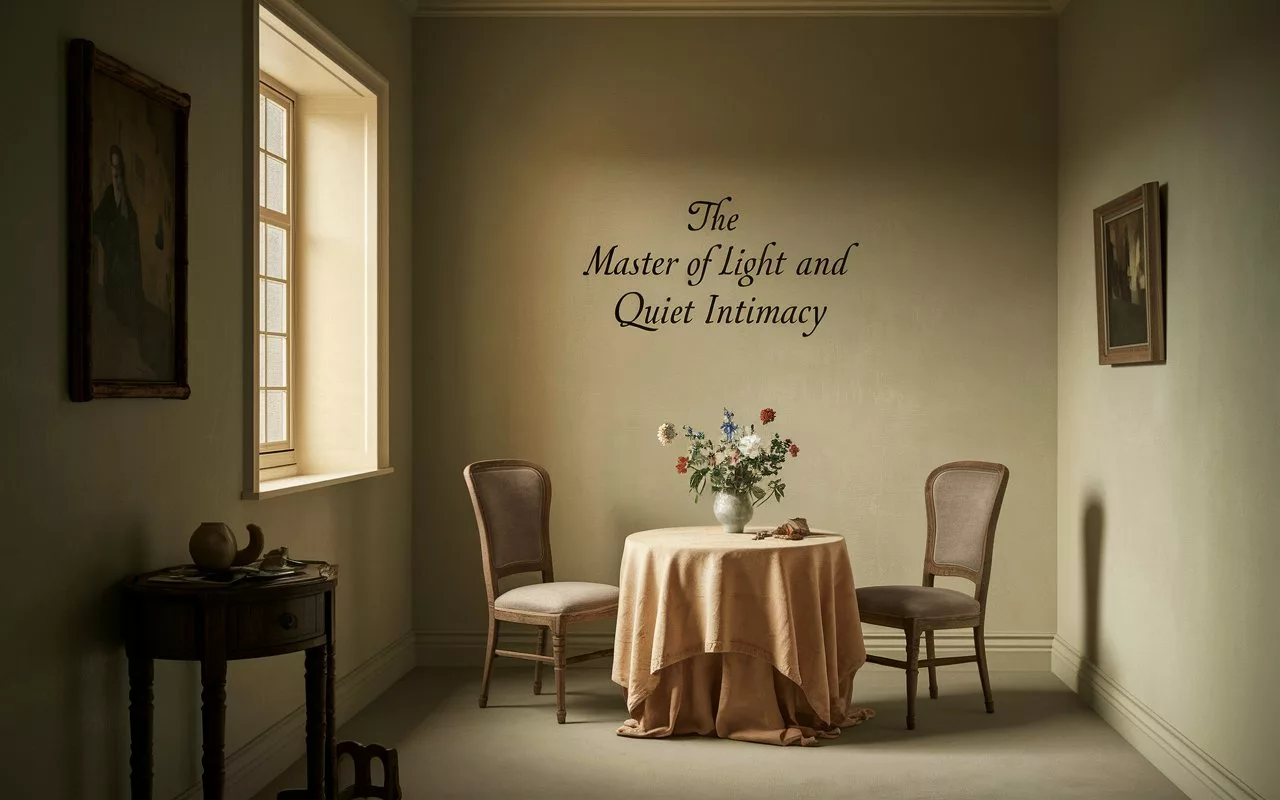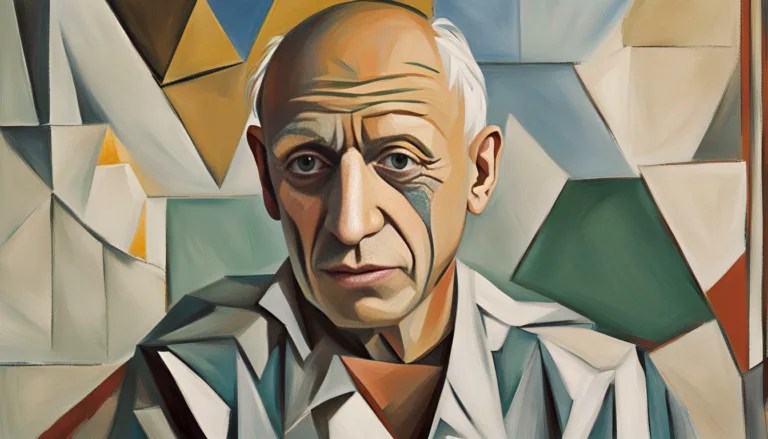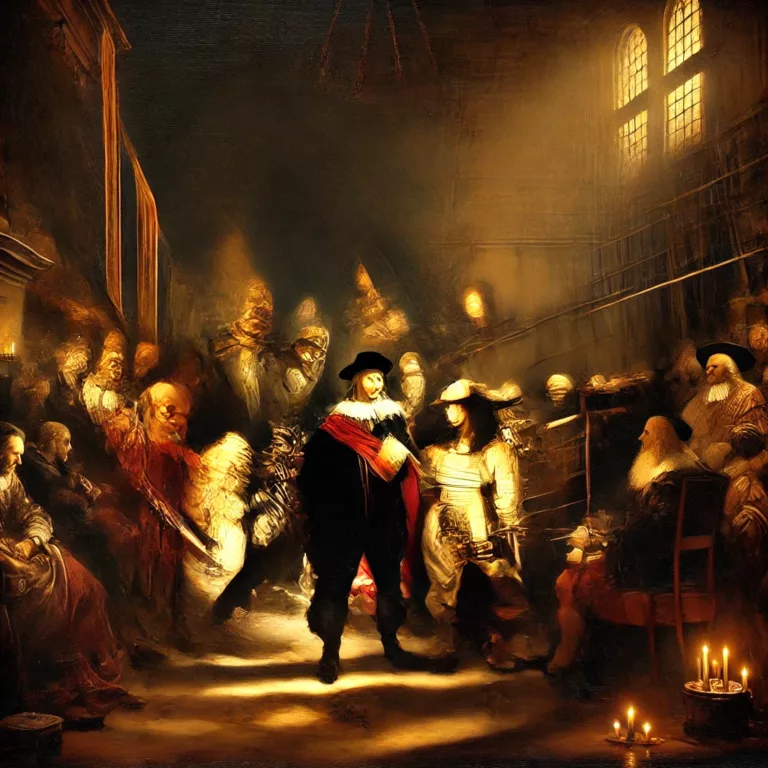Johannes Vermeer: The Master of Light and Quiet Intimacy
Johannes Vermeer (1632–1675), a Dutch Golden Age painter, remains one of art history’s most enigmatic and revered figures. Though he produced fewer than 40 surviving works, his oeuvre is celebrated for its luminous realism, meticulous attention to detail, and profound exploration of domestic tranquility. Vermeer’s ability to capture the interplay of light and shadow, coupled with his serene depictions of everyday life, has cemented his legacy as a master of genre painting. This in-depth exploration delves into his life, artistic techniques, cultural context, and enduring influence.
Early Life and Background
Born in Delft in October 1632, Johannes Vermeer was baptized on October 31, a date often cited as his birthdate due to incomplete records. His father, Reynier Janszoon, was a silk weaver and art dealer, while his mother, Digna Baltens, came from a family of craftsmen. The family’s involvement in the art trade likely exposed Vermeer to paintings and artists from a young age, nurturing his early interest in art.
In 1653, Vermeer married Catharina Bolenes, a Catholic woman from a wealthier family. This marriage elevated his social standing and connected him to Delft’s Catholic minority, a significant detail given the Protestant dominance in the Dutch Republic. The couple had 15 children, though financial strain would plague Vermeer throughout his life.
Vermeer’s artistic training remains shrouded in mystery. Some scholars speculate he apprenticed under Carel Fabritius, a student of Rembrandt, but no definitive evidence exists. By 1653, he joined the Guild of Saint Luke, Delft’s prestigious artists’ association, marking his formal entry into the art world.
Artistic Career and Style
Vermeer’s early works, such as Christ in the House of Martha and Mary (1654–1655), reflect religious and mythological themes common in Dutch Baroque art. However, he soon shifted focus to genre scenes—intimate portrayals of middle-class life that became his hallmark.
Key Characteristics of Vermeer’s Art
- Light as a Narrative Tool: Vermeer’s mastery of light is unparalleled. He used natural light streaming through windows to illuminate subjects, creating a sense of depth and atmosphere. In The Milkmaid (c. 1660), sunlight bathes the scene, highlighting textures like the crusty bread and the maid’s coarse apron.
- Color and Pigments: Vermeer employed expensive pigments like lapis lazuli for ultramarine blue, evident in Girl with a Pearl Earring (c. 1665). His subtle gradations of color and use of pointillé (tiny dots) added vibrancy to fabrics and skin tones.
- Compositional Precision: His works often feature geometric harmony, with maps, windows, and tiled floors creating structured backdrops. The Art of Painting (c. 1666–1668) exemplifies this, blending allegory with meticulous spatial arrangement.
- Quiet Intimacy: Vermeer’s subjects—women reading letters, musicians, maids at work—radiate stillness and introspection. The viewer becomes a silent observer of these private moments, as seen in Woman Holding a Balance (c. 1664).
Techniques and Innovations
Vermeer may have used a camera obscura, an optical device that projects images onto a surface, to achieve his photorealistic effects. This tool likely aided his understanding of light and perspective, though he never merely copied its projections. His brushwork varied from finely detailed to softly blurred, creating a sense of focus akin to a photographic lens.
Major Works and Themes
Vermeer’s small body of work revolves around recurring motifs:
- Domesticity and Femininity: Women dominate his canvases, often engaged in solitary tasks. The Lacemaker (c. 1669–1670) portrays concentrated labor, while Lady Writing a Letter with Her Maid (c. 1670) explores communication and class dynamics.
- Symbolism: Objects in Vermeer’s paintings carry allegorical weight. A pearl earring symbolizes wealth and transience; a balance alludes to moral judgment; maps reflect Dutch global trade and personal journeys.
- Music and Courtship: Scenes like The Music Lesson (c. 1662–1665) intertwine romance and artistry, with instruments symbolizing harmony—or discord—in relationships.
Financial Struggles and Decline
Despite his talent, Vermeer struggled financially. The Dutch economy faltered after the 1660s due to wars with England and France, reducing demand for art. His meticulous process limited output, and he relied on patronage from local collectors like Pieter van Ruijven.
Vermeer’s death in 1675, at just 43, left his family in debt. Catharina attributed his demise to the stress of financial hardship, lamenting that he had “fallen into a frenzy and decline.” His works were sold off cheaply, and his name faded into obscurity for nearly two centuries.
Rediscovery and Legacy
Vermeer’s revival began in the 19th century. French critic Théophile Thoré-Bürger’s essays reintroduced him to the art world, dubbing him “the Sphinx of Delft.” The 1870s Impressionists admired his treatment of light, while Marcel Proust immortalized View of Delft (c. 1660–1661) in In Search of Lost Time.
Today, Vermeer’s works are treasures of museums like the Rijksmuseum and the Mauritshuis. Girl with a Pearl Earring has achieved pop culture status, inspiring novels and films. Exhibitions draw crowds worldwide, testifying to his universal appeal.
Controversies and Mysteries
Vermeer’s life and work spark ongoing debates:
- Attribution Issues: Only 34–36 paintings are confidently ascribed to him. Recent analyses of Girl with a Flute (c. 1665–1675) suggest it may be by a student.
- Theft and Recovery: The Concert (c. 1664) was stolen in 1990 and remains missing, valued at over $200 million.
- The “Vermeer Code”: Some theorists claim hidden symbolism or mathematical precision in his compositions, though most scholars dismiss these as overinterpretation.
Vermeer in Modern Culture
Vermeer’s influence transcends art:
- Literature: Tracy Chevalier’s Girl with a Pearl Earring (1999) reimagines the painting’s creation through the eyes of a fictional muse.
- Film: Peter Webber’s 2003 adaptation heightened public fascination, while documentaries explore his techniques.
- Science: Advanced imaging technologies, like X-rays and infrared reflectography, reveal his underpainting methods and revisions.
Conclusion: The Timelessness of Vermeer
Johannes Vermeer’s art transcends the boundaries of time and place. His scenes of quiet dignity, rendered with technical brilliance, invite viewers to pause and reflect—a antidote to the chaos of modern life. In an era obsessed with speed and noise, Vermeer’s legacy endures as a testament to the beauty of stillness, the poetry of light, and the profound stories hidden in everyday moments. As his star continues to rise, the Sphinx of Delft remains as captivating as ever, his secrets guarded by the soft glow of a pearl or the turn of a maid’s hand.
Art11deco







